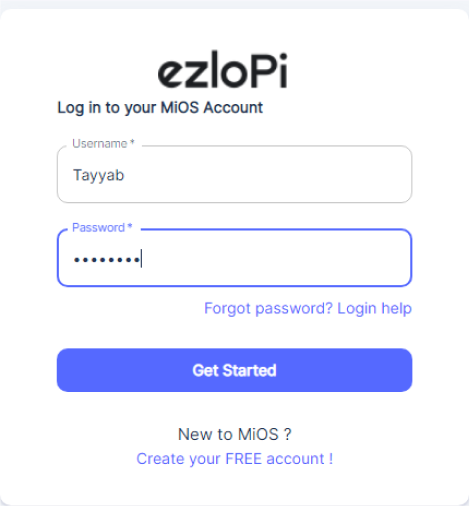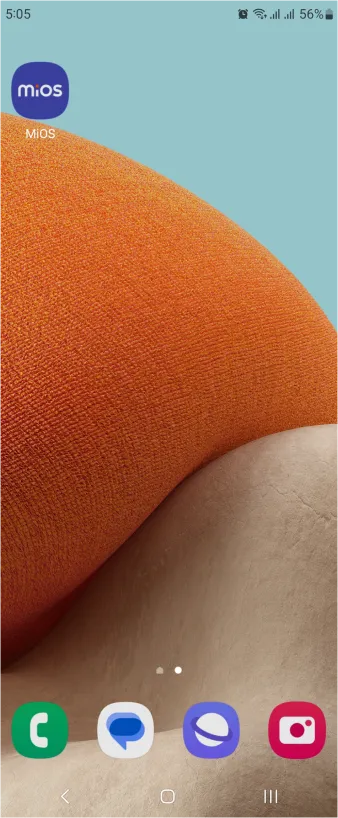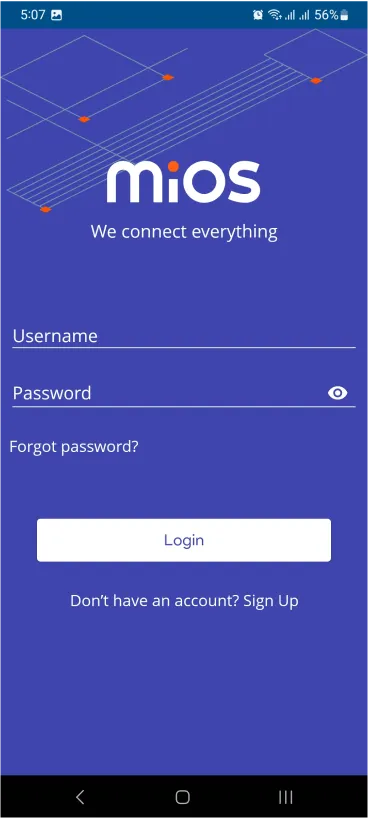
Make your smart home shine with EzloPi innovation!
Schedule your Light with EzloPi MeshBots
The EzloPi smart devices provide automation through simple, customizable use with our open-source EzloPi platform, making daily life easier and improving human-machine interactions.
Before moving into this example, it is very important to know about the device registration, provisioning and converting the ESP32 device into an EzloPi device along with knowledge of Web Flasher, MiOS Mobile Application for Android/iOS and the MiOS Web Application.
1. About this example
In this project, we will interface an AC lamp with the EzloPi device using a single channel relay module which will perform as a switch. This project will enable users to remotely control the AC lamp at any time using the MiOS smart application. Additionally, by utilizing the EzloPi MeshBots, we can schedule the lamp according to our requirements. For instance, we can schedule the lamp to turn on at night and turn off in the morning automatically. This project is designed to provide a user-friendly and convenient solution for automating and managing lighting in a smart home environment and to enhance the user experience and increase energy efficiency.
2. Circuit Setup & Interfacing
The following components are required for interfacing with the EzloPi device:
- ESP32 as an EzloPi smart device.
- Single channel 5V Relay module.
- AC Lamp
The wiring diagram for ESP32 is represented as below:


The following connections are made in order to complete the circuit setup.
From ESP32 to the Relay module:
- Connect the D2 pin from the ESP32 to the Signal pin of the relay module.
- Connect the GND from the ESP32 to the GND of the relay module.
- Connect the ‘VCC’ terminal to 3V3 on the ESP32.
From Relay module to 220V AC Lamp:
- Connect the common of the relay module to the neutral.
- Connect the normally open point to the NO terminal of the bulb, the second point of the bulb will be connected to the phase voltage.
3. Interfacing the Relay module using the EzloPi Web Flasher
Set up your device/hardware by visiting config.ezlopi.com

- Log in using the credentials which you just set earlier while signing up.

- Now, click on the Connect Device button and a pop-up window will appear.

Now, select COM Port to which your ESP32 device is connected. In our case, the COM3 port is used.
Click Connect.

- If you are new to this and it's your first time configuring, select Create new Device ID. Enter Wifi SSID and Wifi Password.
- In the Device Configuration, tab click on Digital.

- A Digital Output window will open for inputting the following parameters:
- Set device name to Relay.
- Set Device subtype to Relay.
- Set OUT GPIO to 2.
- Set Resistor to PULL UP.
- Set the default value to LOW.
- Now Click the Apply button.
- After clicking the apply button you can see a table of your setting in the device configuration tab.
- Press the Flash Device button.
- A window will appear on the bottom right side of the screen displaying “Please press BOOT button while flashing begins.”

- Hold the BOOT button down until the next window appears on the bottom right side of the screen which says “Installation prepared. Please release the boot button now.”

- Release the BOOT button from your ESP32 when this pop-up on the bottom right window appears.

- After some time, a popup will appear saying Device Flashed Successfully! This means that your device has been set up successfully.
4. MiOS Web Application
- After configuring the controller with the EzloPi web flasher, head to ezlogic.mios.com

- Use the same credential to log in that you used for configuring the controller with the web flasher.

- After opening the MiOS web dashboard, you will be able to see the tile of your connected device. The state of the AC lamp can be controlled by just touching on the tile for the lamp connected to the relay module.
- Currently the tile for the relay is OFF, which indicates that the AC lamp is OFF and will turn on according to the MeshBot rules which we will configure below.
MeshBots:

- On the right side of the screen under Automation, click on MeshBots.

- On meshbot screen, click on Create new MeshBot button present on the top right corner of the screen.

- After clicking on Create new MeshBot you will see this now under Automation MeshBot click on Cloud.
- On the next screen you will see that we can create a name of our choosing, in this case we write it as Test006.

- In the trigger tab you can set the TRIGGER for your device and in the ACTION tab you can set the action to be performed based on the trigger which you have created.

- Set these values in TRIGGER section:
- Set Node Type to Date and Time.
- Set the Node to Days of the Week and select the days.
- Set the Choose the moment of day activation will occur.

- Set these values in the ACTION section.
- Click on TRUE.
- Set Node Type to Device.
- Set Controllable Type to Relay.
- Set the Capability Type to switch.
- Set the Value to true.
- Set Action to immediately.
- Now Click the Save button.

- After clicking the save button you can see this screen on the top right corner of the screen.

- Here you can see your saved MeshBot. Now click on Dashboard.

- Here in the MiOS web dashboard, you can see that when the set time is reached, the relay turns on because of the meshbot rules.
5. MiOS App
You can download the MIOS Android app from the Google Play Store and Apple App Store.
- After downloading the app, proceed to install the application and open it.

- Using the MIOS mobile application, create a new Ezlo Cloud account using the sign-up option. If you already have an account, you may proceed to log in.

- After successfully logging in, you will be able to see the number of controllers connected such as a lamp, fan, or any other device in the MiOS app. Tap on any controller of your desired ID:

- You will be able to see the status of your controller whether it is online or offline. Access the device dashboard, and tap the device. The following view of the dashboard will appear:

- After opening the MiOS mobile app dashboard, you will be able to see the tile of your connected device. The state of the AC lamp can be controlled by just touching on the tile for the lamp connected to the relay module.
- Currently the tile for the relay is OFF, which indicates that the AC lamp is OFF.

- Similarly, it can be seen that when the set time is reached, the relay module is ON indicating that the AC lamp is also on. This indicates that the rules we have set in meshbot are working.

eZlopie Products A single-channel 5V relay module $00.00

eZlopie Products Momentary switch $00.00

eZlopie Products Level Shifter Module (BSS138) $00.00

eZlopie Products ESP32
$00.00

eZlopie Products AC Lamp and Holder
$00.00












